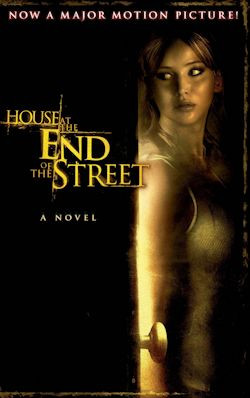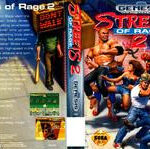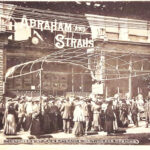Lily Blake’s novel, “The House At The End Of The Street,” emerges from the intriguing space where screenplay meets page, originating from a screenplay by David Loucka, itself inspired by a story by Jonathan Mostow. As someone who typically gravitates towards books before their cinematic adaptations, the premise of a novelization offered a unique reading experience, setting the stage for a young adult horror thriller that promised suspense and a chilling atmosphere.
Clocking in at a concise 190 pages, “The House At The End Of The Street” is indeed a quick read, almost too swift in its unfolding. The pacing is undeniably rapid, maintaining a level of suspense that keeps you engaged, albeit without venturing into groundbreaking territory. While the core concept is compelling enough to hold attention, the narrative relies heavily on a twist to deliver originality. This twist, while effective, isn’t entirely novel, echoing familiar themes found within the broader suspense genre. To delve deeper would risk revealing crucial plot points, best left for readers to discover firsthand.
Despite its engaging plot, the book’s writing style doesn’t quite reach the level of gripping prose. It feels distinctly like a movie adaptation, lacking the rich descriptiveness that allows readers to fully immerse themselves in the characters’ emotions and the story’s setting. The narrative unfolds in a somewhat detached manner, as if recounting scenes viewed on screen, rather than inviting readers into the characters’ inner worlds.
 the house at the end of the street
the house at the end of the street
However, for what it aims to be – a young adult horror thriller – “The House At The End Of The Street” is far from disappointing. It successfully captures and maintains attention, prompting a desire to see the story through to its conclusion. While it may not induce nail-biting tension, it provides a steady level of engagement, reminiscent of classic, low-budget horror films.
The story centers around Sarah and her daughter Elissa, whose relationship is strained following Elissa’s father’s departure. Seeking a fresh start and hoping to guide Elissa away from potential pitfalls, Sarah relocates them from the city to a quieter small town. They settle into an affordable rental, its lower price a stark reminder of the tragic history next door – a house where a couple was murdered by their teenage daughter.
Adding to the town’s unsettling atmosphere, the son of the murdered couple still resides in the infamous house at the end of the street, much to the disapproval of the community. Elissa’s path crosses with his one rainy night when he offers her a ride home. Against Sarah’s better judgment, a friendship blossoms between Elissa and the ostracized young man, drawing him back into the unwelcome glare of public attention after his attempts to remain secluded.
“The House At The End Of The Street” offers a light, suspenseful experience, easily consumed and enjoyable in its genre. It evokes the spirit of less graphic thrillers like “Scream” or “Nightmare on Elm Street,” focusing on suspense and atmosphere over excessive gore. For readers who appreciate young adult thrillers with a focus on suspense and are willing to temper expectations of literary depth, “The House At The End Of The Street” provides an entertaining and quick dive into suburban secrets and unsettling relationships. It’s a read best approached with an open mind, ready to appreciate its suspenseful simplicity and the twists it holds within its pages.


